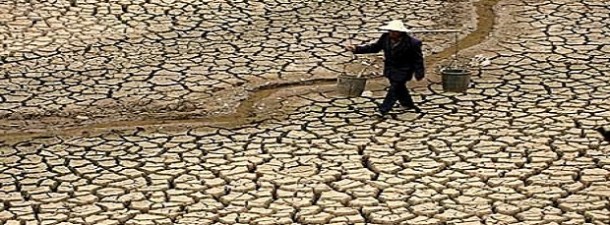Maharashtra, one of the most developed states in India, is reeling under its worst crisis in decades due to dry run in the summer rainfall during the last couple of monsoon season. The sad part is that the government was made to realise the plight of the sufferers only when few TV Channels came out with clipping of extensive water being used in the state for preparing the cricket pitches for the Indian Premier League. At the same time, the hilly state of Uttarakhand the forest are under fire. These two devastating events are keeping the leaders at their best- trying to escape the responsibity and going all out to find an escape goat.
The state of Maharashtra in the western coastal area has the distinction of having the largest number of dams in whole of India, yet there has been a severe water crisis. Successive droughts due to the deficient monsoon run have broken the backbone of state’s farm-dependent economy. Almost all water bodies – rivers, ponds, wells, tube wells – have gone virtually dry. Dam reservoirs have hit their precariously low storage capacity levels, causing not only water scarcity in Maharashtra, but also forcing many farmers to take their lives.
The draught in Maharashtra and the forest fire in Uttarakhand is a stark reminder of what India as a nation and Indians as its native have been doing to its soil, water and forest. Marathwada in Maharashtra lies in the rain shadow of the Western Ghats and receives an average of 600-700 mm of rainfall. Given the hard rock bed, only 10 per cent of this water goes into the ground to recharge wells. The same area is also one of the largest producer of Sugarcane and it requires 1,200 mm of water, which is 20 times more than the annual recharge. When for years, a state has been withdrawing 20 times more water from the ground, a water famine is inevitable, even when the rainfall is normal. An abuse of the land to without any rationale for producing a crop, that has been making the land dry is a facia of policies gone wild. This year, the Godavari river in Nashik went dry. There is no water in Ramkund — the sacred pond in Nashik devotees come to bathe in during the Kumbh. In the town of Latur in Marathwada, water scarcity is so severe that the district collector had to impose Section 144 of the CrPC (making assembly of more than 10 people unlawful) for two months to prevent law and order problems arising from the water crisis.
This is a saga of how India has violated its soil and water. The violence committed on the nature is translating into an emergency. The fire in the forest of hill state of Uttarakhand, that has been ranging for over three months is another reminder of how insensitive all those who matter have been. It is strange that while many are taking a pride in talking about the draught in the western state and fire in the northern hill state, there has been no mention on the impact on the flora and fauna. The fire in Uttarakhand is man made, where in order to get the coal from the Pine needles, locals who are not allowed to pick these up, adopt to setting some area on fire to let the pine needles get converted into coal. However, this time the fire of the Pine needles that cover the forest floor went out of control leading to a major damage. In Maharashtra, the administration has taken over 150 wells and tubewells near Latur because the dam that supplied water to Latur’s population of 4.5 lakh and adjoining rural areas dried up in March. Now Water is being supplied by tankers after a train brings water all the way from Kota. As the government has been trying to provide the water, a TV channel showed how the rich and influential are able to get water from “private providers” for a cost. Even such an expose didn’t force the government to ask the basis question. When the water is a state subject, how can the same become the property of some private parties? Nexus!
Arranging water through trains, tankers may be able to address the water emergency in a short run. Rejuvenating the water systems would need a fundamental shift in paradigm. A shift that makes the Indians realise that resources like land, water and forest need not be treated the way they are being. But are the governments ready?







No Comments
Comments for The crisis of water and forest …………………………………. all man made are now closed.